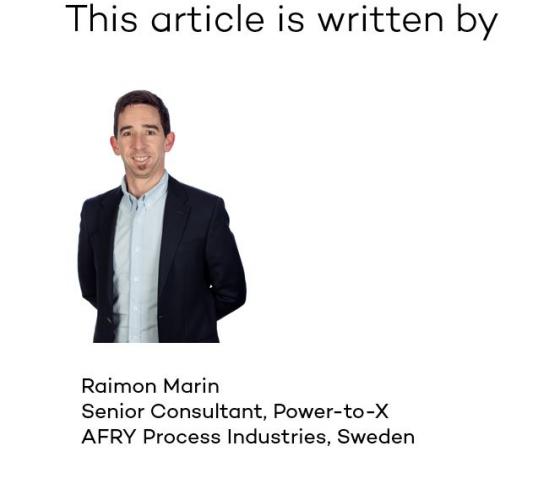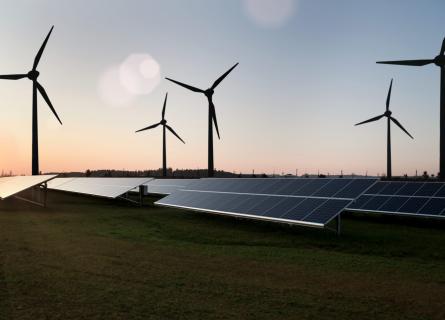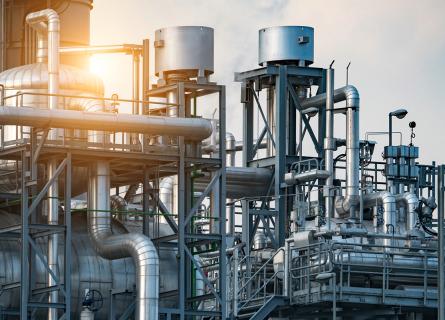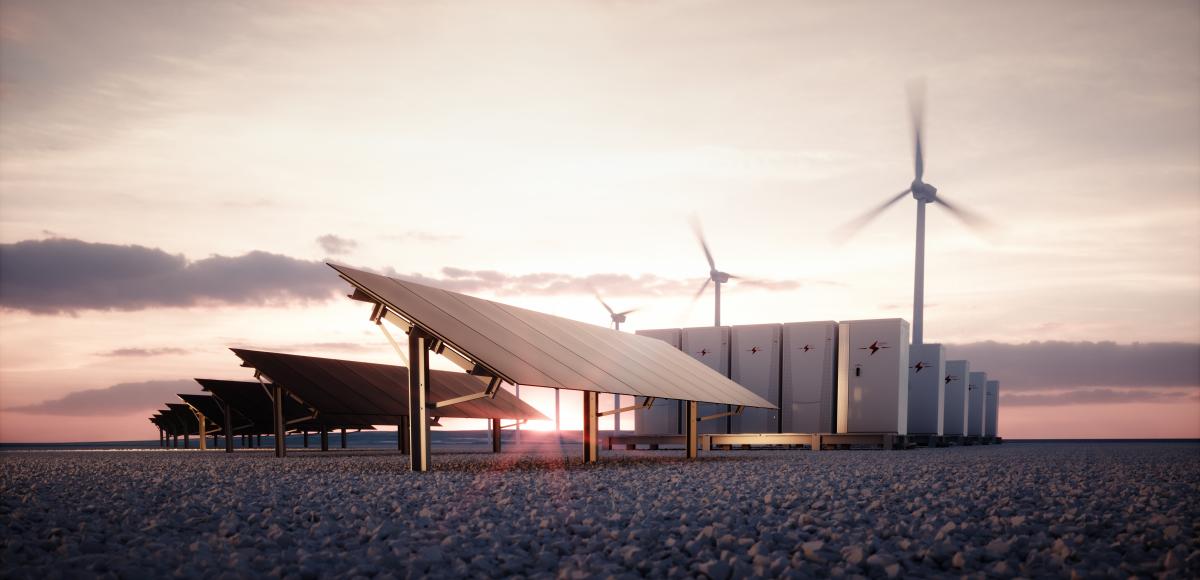
Power-to X integration, the methanol case
Renewable power to methanol projects can provide an economically attractive route to renewable methanol production
Power-to-X (PtX) technologies use electricity, preferentially renewable electricity, to produce hydrogen via electrolysis of water, with oxygen and low-grade heat as the main by-products. The hydrogen is further used in a range of applications, shown in Figure 1; namely, e-methanol, e-ammonia, synthetic natural gas, synthetic sustainable aviation fuel, direct reduction of iron, and many more.
Integrating small and medium PtX projects into existing facilities is an attractive approach already taken by several players in the industry (S&P Global, 2020) due to the revalorization of side streams and potential reduction of the CO₂ footprint of the existing facility. For PtX applications like methanol and other synthetic hydrocarbons, pulp mills or bio-waste to power are a good fit since there is availability of biogenic CO₂ and possibly a reliable supply of renewable electricity. Here, a seamless integration is required for financial success, and it must be made by players with expertise along the whole project value chain (from market analysis and levelised cost of electricity/hydrogen and final product to understanding the technical particularities of pulp mill/bio-waste to power, carbon capture, and PtX). AFRY(c) has a long tradition in market analysis and both pulp mills and bio-waste to power plants with know-how in carbon capture and PtX, as shown in Figure 2, with a track record of successful PtX integration projects.
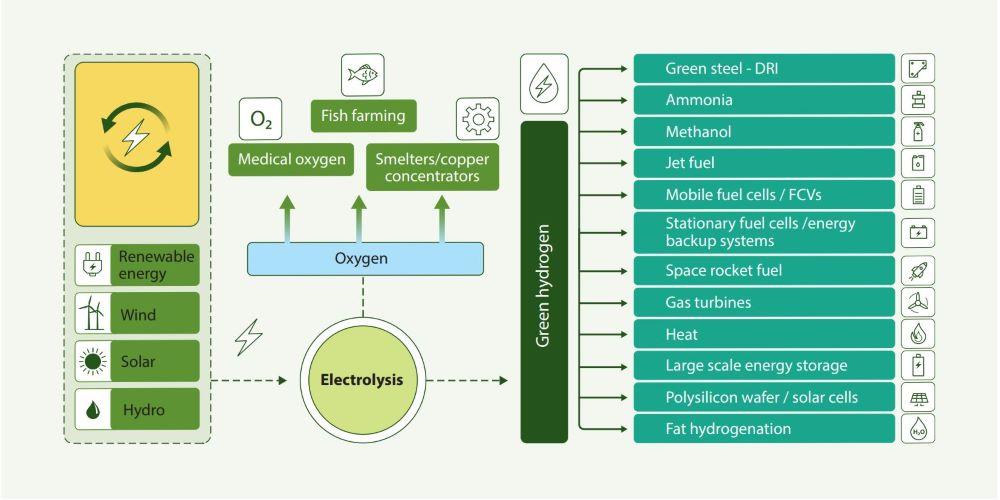
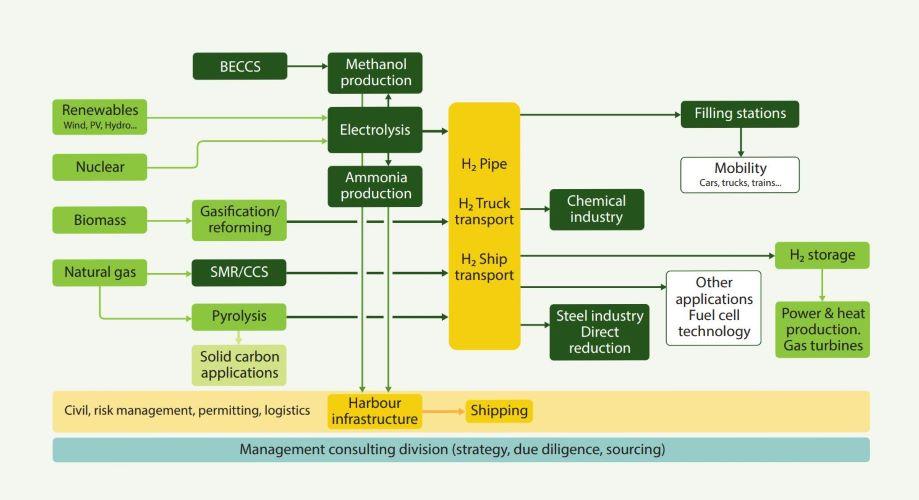
Selecting the hydrogen plant
Hydrogen is the pivotal element in PtX; selecting the right technology that better adapts to your process needs will help you succeed in your project. Currently, two main technologies can be readily deployed at a certain scale, say more than 20 MW. These are alkaline electrolyte (AEL) and polymer electrolyte membrane (PEM). There are also other technologies in the pipeline at different stages of maturity (such as solid oxide electrolyte and anion exchange membrane); however, none have yet been deployed and operated at any significant industrial scale.
Common knowledge says that PEM is well suited for fluctuating power inputs (like those in wind and photo-voltaic farms), whereas AEL has better efficiency at the cost of lower flexibility in rapid turn-down/up scenarios. Although true, that is a rather simplistic approach, and it could lead to costly pitfalls when designing hydrogen plants above 100s MW. Through experience, we have developed the know-how in managing and executing the design and optimisation of medium- and large scale electrolysers of either technology in a way that works better in terms of plant availability and flexibility, project finance, power profile, and any other constraints you may encounter. Furthermore, we can forecast both electricity and hydrogen price, which is key to optimize hydrogen plant size and the storage facility (should this be needed).
The x in the equation
The value chain in PtX is very wide and aims at servicing many industries, as seen in Figure 1. Applications that may be easiest to adapt are those that traditionally use hydrogen, such as fuels, ammonia, methanol, and direct reduction of iron. All these processes and applications have well-established and reputable equipment vendors and process licensors. Our role at AFRY is to work as the ‘glue’, integrating every part of the project value chain, from licensed processes, electrolyser equipment and balance of plant, compression and storage, utilities from existing facilities (should it be a brownfield project), and developers’ and owners’ interests.
e-Methanol
Methanol has a vital role in our daily life, being fundamental to the commodities value chain and one of the most promising sustainable fuels for the shipping industry (Maersk, 2021). The main feedstocks to make e-methanol are hydrogen (or electrical power and water) and CO₂. Other inputs to the process are low/ medium-pressure steam for carbon capture and methanol distillation, compression power, and other utilities.
As discussed above, to extract maximum value from e-methanol, the CO₂ must come from biogenic sources, which are abundant in pulp mills and bio-waste to power plants. There are various ways of integrating the PtX plant into the CO₂ provider facility. An example would be to route the steam demand from the carbon capture and methanol plant into the pulp mill or a bio-waste to power plant, aiming to minimize its cost and loss in power production. Another example of process integration would be dealing with side streams; for example, oxygen is freely produced in PtX as a by-product. Although oxygen has a well-established market, it is quite often a saturated market; hence, finding new off-takers may be challenging, especially ifthe market becomes flooded with oxygen from many MW (or GW) scale PtX projects. One option is to find a nearby off-taker, like the pulp mill itself. Here, knowing intimately how a pulp mill operates creates a leading advantage for the project by monetising this side-stream that otherwise would have been vented or sold at a marginal price. This is another example of how partnering with an engineering specialist in PtX and associated industries can give you the extra edge in your project’s viability.
Case study: viability of integrating an e-methanol facility in a pulp mill
A pulp mill was considering revalorising ca. 70 MW of surplus electricity by producing e-methanol. The three main operating units to deploy are: the hydrogen plant (electrolysis based), carbon capture and conditioning, and the methanol synthesis loop. Figure 3 shows a representative diagram of the main units in an e-methanol facility.
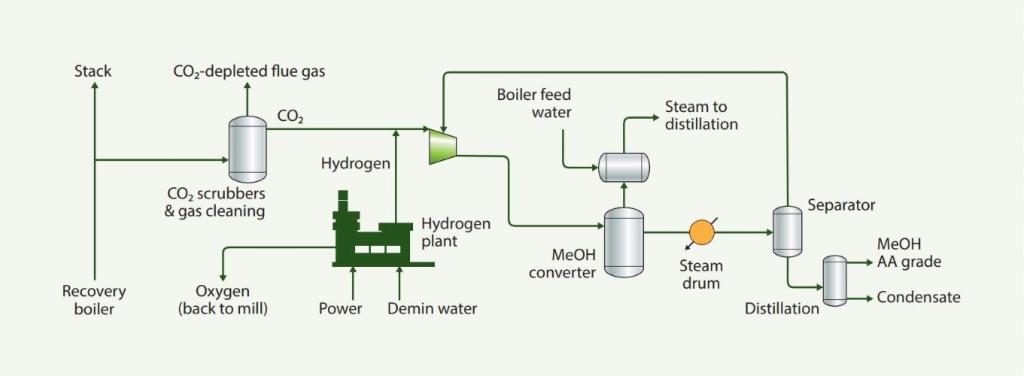

Biogenic CO₂ is abundant in pulp mills and, as such, was not a limiting factor in sizing the e-methanol facility. Amine-based carbon capture technology for flue gas applications was selected in this project as a proven way of recovering CO₂. The content of CO₂ in the flue gas was around 15 vol%, whereas the purity of CO₂ recovered was more than 98 vol%, with the balance being mainly water. The front end of the carbon capture plant was designed to remove particulate matter, SOx, and NOx, although it was important to ensure there was no sulphur slip (from reduced species) in the recovered CO₂, which would irreversibly damage the catalyst if it slipped through to the methanol synthesis loop. The technology to remove reduced sulphur species is readily available; however, proper sulphur speciation is required for an adequate design. The flue gas from the recovery boiler comprises <10 ppmv of reduced sulphur, of which >80% is H₂S and the balance light sulphur organic species. The low-pressure steam needed to run the reboiler in the carbon capture section is taken from the main facility condensing turbine.
Hydrogen production was the limiting factor in this case study (in fact, renewable power to produce hydrogen) and very likely in most projects of this type. Given the power profile available, alkaline water electrolysis was well suited. The hydrogen generated is at 99.95 vol% purity, the balance being mostly moisture since the deOxo catalytic unit depletes oxygen that slips with hydrogen. The oxygen by-product is sent back to the mill as a chemical consumable, creating a credit for the e-methanol facility.
Hydrogen and CO₂ are mixed in an over stoichiometric ratio. A sulphur guard upstream of the methanol converter removes any reduced sulphur that comes with the CO₂, extending the life of the methanol catalyst. Then the gas mixture is compressed up to the operating pressure of 80 barg in the make-up compressor.
The methanol synthesis technology selected takes care of the heat of reaction by raising steam in a steam raising reactor; the generated steam is further used in the distillation reboiler. The conversion per pass is rather low as the reaction runs towards equilibrium, yielding a methanol content at reactor exit close to 5.5 vol%. Crude methanol is recovered at 40ºC, and unreacted gases are recirculated in a large recirculating loop to the high-pressure stage in the make-up compressor. The crude methanol is distilled to AA grade in a distillation column. Steam generated in the methanol reactor is not sufficient to run the reboiler in the distillation column, therefore medium-pressure steam is bled from the pulp mill to balance the energy demand. In compensation, the higher alcohols and other by-products formed in the reactor and the off-gas are used as fuel in the mill’s recovery or auxiliary boilers. Table 1 summarises the key indicators in the e-methanol plant.
Economic analysis
To evaluate the profitability of the project, the cost of methanol was calculated considering the production rate, and the Capex and Opex of the PtX facility. Fossil-based methanol market price was used as a reference. The results are summarised in Figure 4. To help understand whether the owner of the facility should look further to invest in a brownfield e-methanol plant, the price of selling electricity to the grid was also plotted (see Figure 4). Note that if electricity is not used to produce e-methnol, it is otherwise sold to the grid, marking the break-even point.

For a region with low electricity prices of around 20 Euro/MWh, such as the northern part of Scandinavia (Energiförsk, 2021), with plenty of biogenic CO₂ available, it may be worth considering such a facility, as Figure 4 suggests. Recent moves towards sustainable maritime fuels have highlighted the potential of e-methanol (Maersk, 2021) and may foster the deployment of these types of facilities in areas with these conditions (low electricity price and plenty of biogenic CO₂ available). Other regions with plenty of biogenic CO₂, such as South America, may consider this approach if electricity prices are around the same mark and there is an oxygen off taker nearby, like the pulp mill itself.
Conclusions
Power to methanol projects can provide an economically attractive route to renewable methanol production when the plant is co-located in a pulp mill or bio-waste site with sources of biogenic CO₂ and a source of renewable electricity. Success factors include short- and long-term market scenarios, site selection and permitting, plant integration with shared utilities, an off take for oxygen by-product, and sound technical solution selection. The early appointment of a reliable engineering partner with the relevant know-how in all areas around PtX, who supports the project owner’s interests, is fundamental for successful project delivery.
This insight is originally published in Decarbonisation Technology Magazine in August 2022.
https://ptqmagazines.digitalrefining.com/view/200571133/
